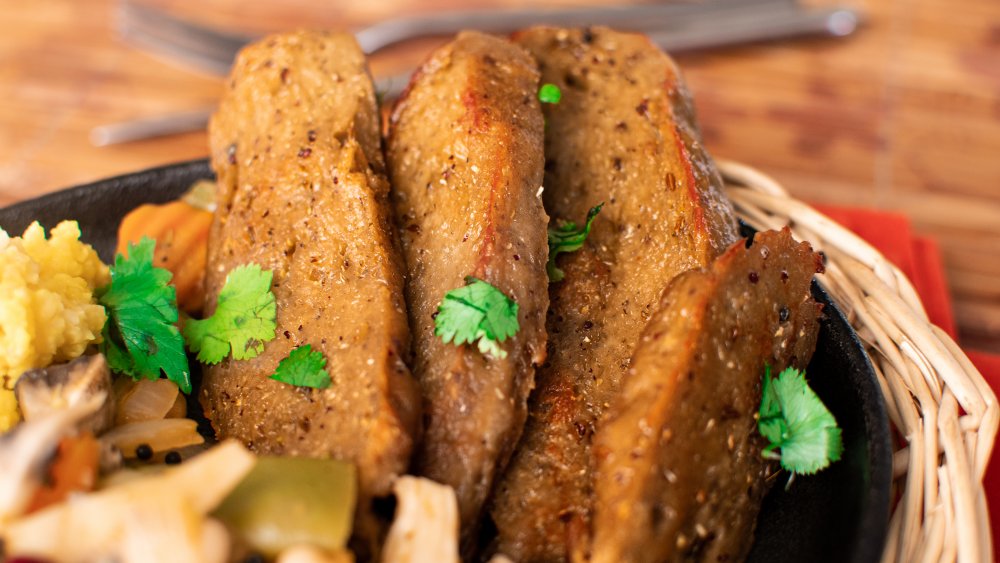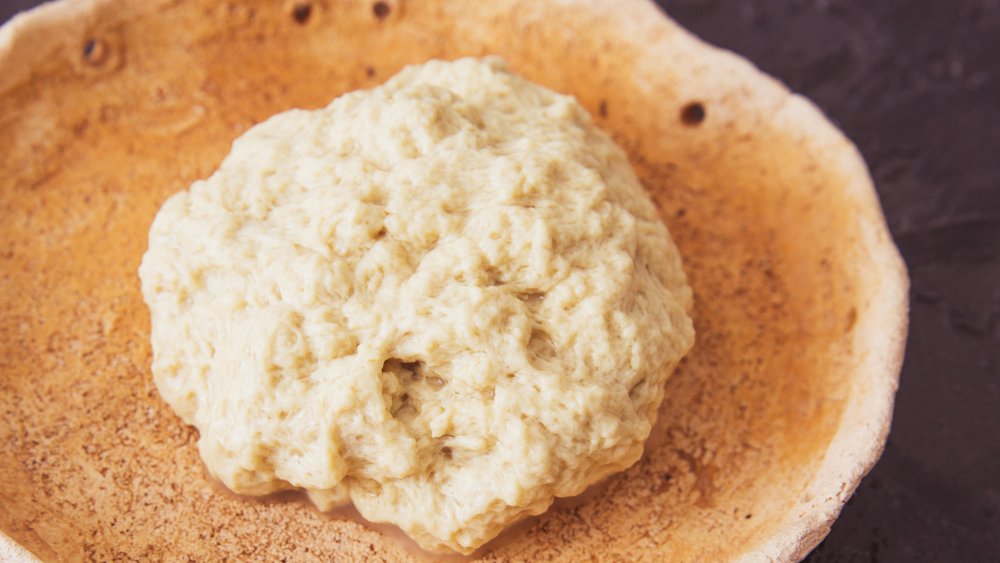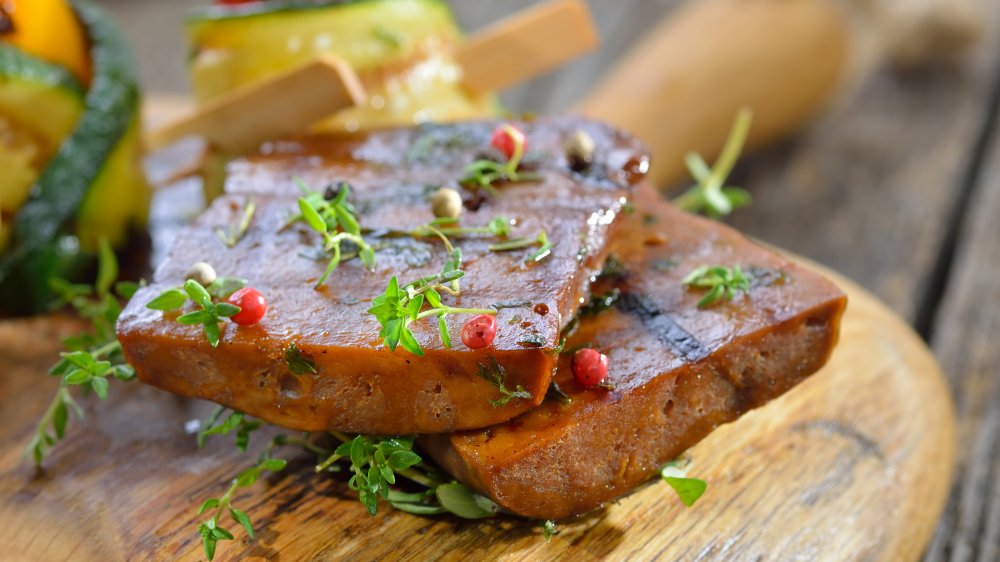What Is Seitan Actually Made Of?
Unless you've been living under a rock, you've witnessed the meteoric rise of plant-based meat alternatives. They've gone fully mainstream in fast-food outlets, from Burger King's Impossible Whopper rollout to Beyond Meat burgers at Carl's Jr. And you know they've arrived when they're even popular enough to spur their own backlash from media, food execs, and dietitians who warn that plant-based meat is no healthier than the real thing (via Vox).
But one meat alternative has been kicking around for much longer, and with a lot less fuss: seitan. This "wheat meat" boasts several benefits: It sports a significantly shorter list of ingredients than many of today's mass-produced products, is relatively simple to make at home, and offers a convincingly meaty chew that makes it ideal for a bevy of applications in the kitchen.
The story of seitan
Seitan has a centuries-long history in Asian countries such as Japan and China, thanks to its development by Buddhist monks who embraced a vegetarian lifestyle (via Smithsonian Magazine). Though recipes vary, at its simplest, home chefs can simply mix, soak, and knead wheat flour and water to make homemade seitan. According to Healthline, once all the starch on the dough is rinsed away, you're left with pure gluten protein. Many cooks save time and effort by using vital wheat gluten as a base ingredient instead, with additions that may include soy or chickpea flour (via Connoisseurus Veg), as well as flavor boosts like nutritional yeast or garlic powder. After the basic dough is formed, it's simmered in a broth (also with endless variations, but often infused with soy sauce or liquid aminos) to add savory, salty goodness.
How is seitan used?
Seitan's lasting and widespread popularity around the world is surely based on its remarkable versatility. Yes, it's ideal for replacing meat in Asian-inspired staples like Mongolian beef, General Tso's chicken, or any manner of stir-fried dishes. But seitan can shape-shift across cultures, making a vegan-friendly substitute in everything from Salisbury steak cutlets and carne asada tacos to Southern fried chicken and Philly cheesesteak sandwiches. In short, if the recipe calls for meat, you can probably try seitan instead.
The one caveat? As expected from something dubbed "wheat meat," seitan is a no-go for gluten-intolerant types. True, no one meat replacement can be everything to everyone, but seitan comes pretty darn close.


